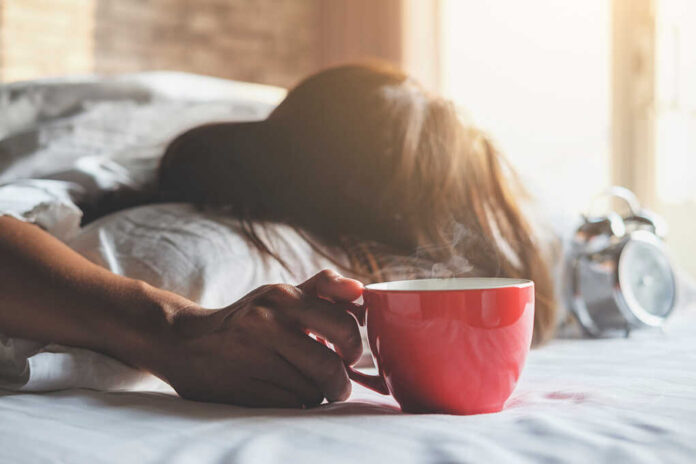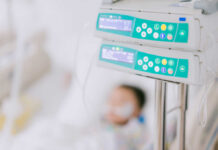
Combining coffee and a quick nap may be the ultimate energy-boosting secret that science supports, and it’s easier to implement than you might think.
At a Glance
- A “coffee nap” involves drinking coffee quickly then immediately taking a 20-minute nap, allowing both strategies to work together for maximum alertness
- The science works because caffeine takes about 20-30 minutes to kick in, just as you’re waking from your nap
- Coffee naps are more effective than either coffee or napping alone, with studies showing improved reaction times and fewer errors on tasks
- Timing is crucial – the ideal window is between 1-3pm when natural alertness dips, and avoiding naps too close to bedtime
How Coffee Naps Work: The Science of Synchronized Energy
When afternoon fatigue hits, most people reach for either coffee or try to squeeze in a quick nap. But research suggests combining these two common remedies creates a powerful synergy. Coffee naps work through precise biological timing. After drinking coffee, caffeine takes approximately 20-30 minutes to be absorbed through your digestive system, enter your bloodstream, and reach your brain. This delay creates the perfect window for a short nap, allowing both strategies to complement each other rather than compete.
The mechanism involves adenosine, a neurotransmitter that builds up in your brain throughout the day, causing feelings of fatigue. A short nap naturally clears adenosine from receptors in your brain. Meanwhile, the caffeine you consumed before napping arrives just as you’re waking up, blocking those same receptors from accepting new adenosine molecules. The result is a double-whammy against drowsiness.
Evidence of Effectiveness: What Studies Show
Coffee naps aren’t just theoretical – multiple scientific studies have documented their benefits. Researchers at Loughborough University found that tired drivers who took a coffee nap made fewer driving errors compared to those who only had coffee, only napped, or did neither. Subsequent studies have shown similar benefits, with coffee nappers demonstrating improved memory function, faster reaction times, and reduced feelings of fatigue compared to control groups using either strategy alone.
In one Japanese study, participants who took coffee naps performed significantly better on memory tests than those who only took naps, while British researchers discovered that coffee nappers showed fewer errors in a driving simulator than other test groups. These consistent findings across different study designs suggest the effect is reliable and not just placebo. The scientific consensus seems clear: coffee naps provide cognitive benefits beyond what either coffee or napping alone can deliver.
How to Take an Effective Coffee Nap
The procedure for an effective coffee nap is surprisingly straightforward but requires attention to timing. Start by quickly consuming a cup of coffee – regular, not decaf. The ideal amount contains about 200mg of caffeine, roughly the equivalent of one strong cup. Immediately after drinking your coffee, find a comfortable place to lie down and set an alarm for 20 minutes. The goal is to fall asleep quickly and wake before entering deep sleep stages, which could leave you feeling groggy.
The best time for a coffee nap is between 1 p.m. and 3 p.m., which aligns with natural circadian dips in alertness. Make sure to avoid napping too late in the day, as this could interfere with nighttime sleep. Similarly, those with caffeine sensitivity or sleep disorders should approach coffee naps with caution, potentially reducing the caffeine amount or considering regular naps instead. Even if you don’t actually fall asleep during your coffee nap attempt, simply resting quietly with eyes closed can still provide benefits when combined with caffeine.
Individual Factors: When Coffee Naps Work Best
Not everyone will respond identically to coffee naps. Genetic factors play a significant role in how quickly your body metabolizes caffeine. People with certain variations of the CYP1A2 gene process caffeine more rapidly or slowly than others, which may affect how well coffee naps work for them. Those who metabolize caffeine slowly might need less coffee or feel effects longer, potentially interfering with nighttime sleep if taken too late in the day.
Coffee naps are particularly beneficial for shift workers and people experiencing sleep deprivation. According to the U.S. Bureau of Labor Statistics, approximately 15 million Americans work full-time on evening, night, or rotating shifts, which frequently causes irregular sleep patterns. For these individuals, strategic coffee naps can provide a critical boost during work hours when complete sleep schedules aren’t possible. However, coffee naps should supplement, not replace, the practice of maintaining overall good sleep hygiene and regular sleep schedules when possible.
Sources:
https://www.abc.net.au/news/2017-04-03/how-coffee-naps-can-help-you-power-through-the-day/8411524
https://www.xcode.life/genes-and-sleep/coffee-nap-phenomenon-fad-or-fact/
https://nypost.com/2025/04/09/health/coffee-naps-can-help-you-feel-rested-but-timing-is-key/


















